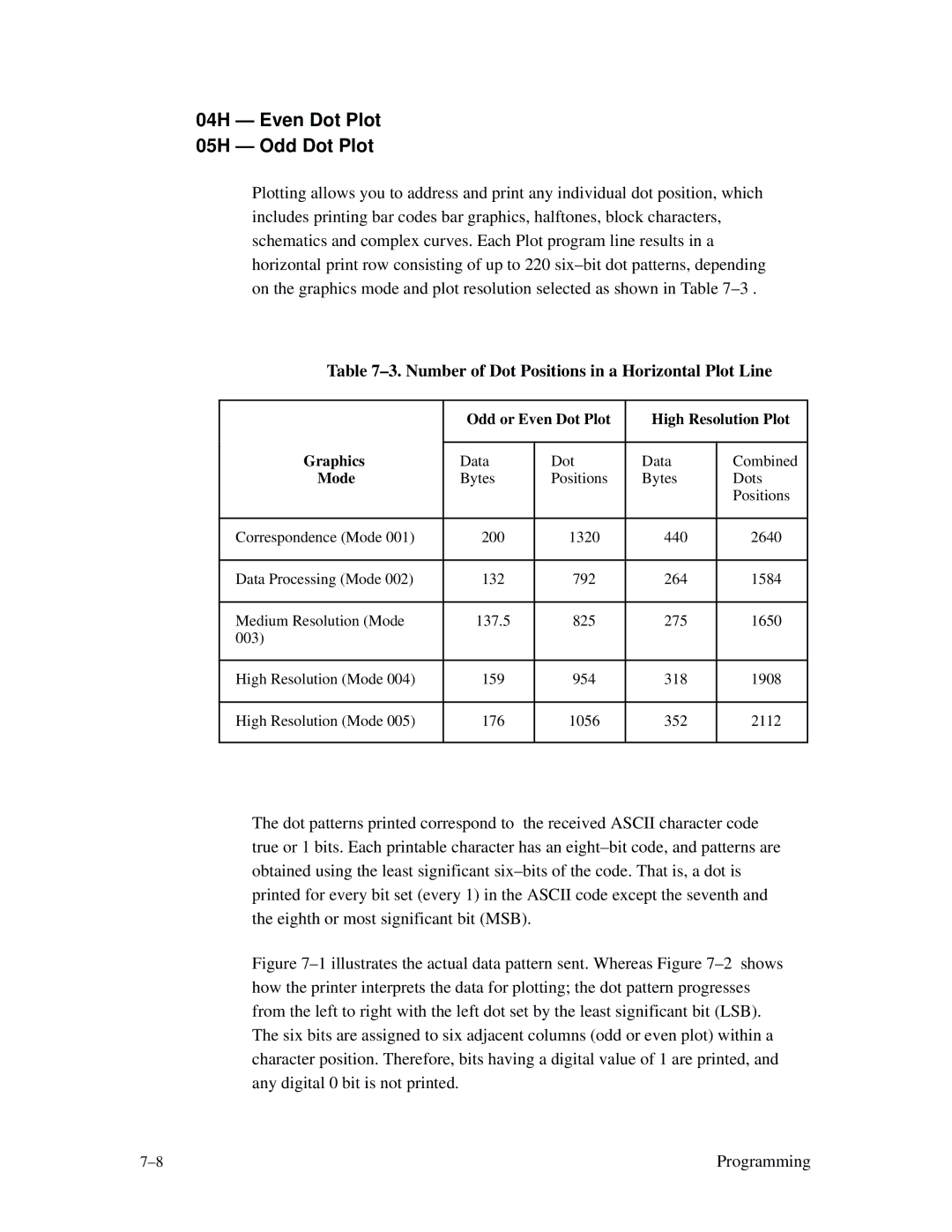04H — Even Dot Plot
05H — Odd Dot Plot
Plotting allows you to address and print any individual dot position, which includes printing bar codes bar graphics, halftones, block characters, schematics and complex curves. Each Plot program line results in a horizontal print row consisting of up to 220
Table 7–3. Number of Dot Positions in a Horizontal Plot Line
| Odd or Even Dot Plot | High Resolution Plot | ||
Graphics |
|
|
|
|
Data | Dot | Data | Combined | |
Mode | Bytes | Positions | Bytes | Dots |
|
|
|
| Positions |
|
|
|
|
|
Correspondence (Mode 001) | 200 | 1320 | 440 | 2640 |
|
|
|
|
|
Data Processing (Mode 002) | 132 | 792 | 264 | 1584 |
|
|
|
|
|
Medium Resolution (Mode | 137.5 | 825 | 275 | 1650 |
003) |
|
|
|
|
|
|
|
|
|
High Resolution (Mode 004) | 159 | 954 | 318 | 1908 |
|
|
|
|
|
High Resolution (Mode 005) | 176 | 1056 | 352 | 2112 |
|
|
|
|
|
The dot patterns printed correspond to the received ASCII character code true or 1 bits. Each printable character has an
Figure 7–1 illustrates the actual data pattern sent. Whereas Figure 7–2 shows how the printer interprets the data for plotting; the dot pattern progresses from the left to right with the left dot set by the least significant bit (LSB). The six bits are assigned to six adjacent columns (odd or even plot) within a character position. Therefore, bits having a digital value of 1 are printed, and any digital 0 bit is not printed.
Programming |
